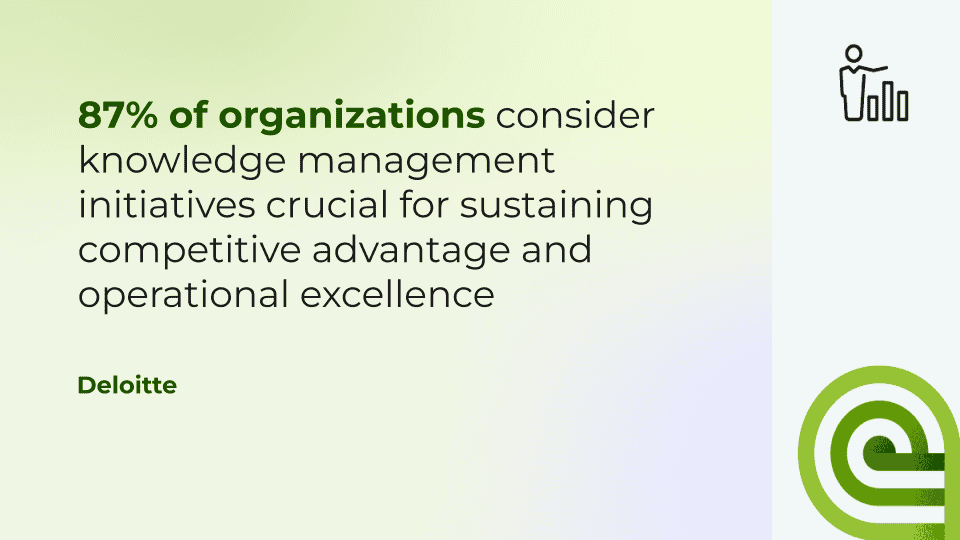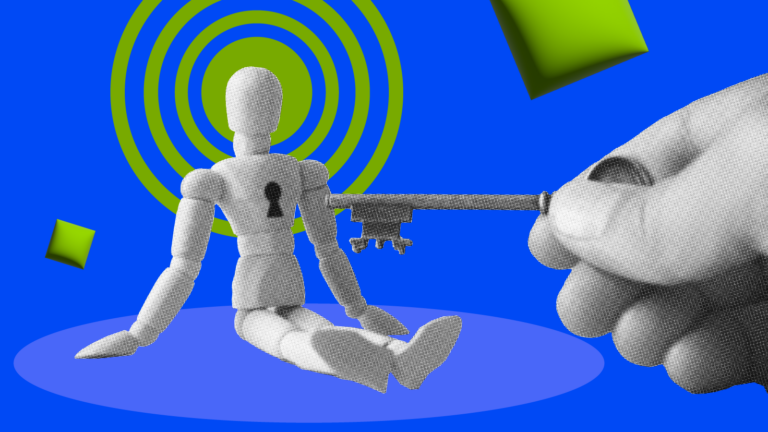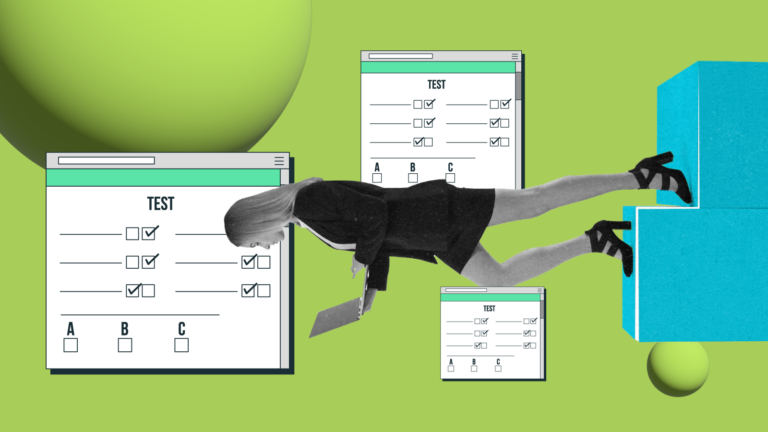
Arginare l'erosione della conoscenza: Strategie innovative per l'era digitale

The ability of your organization to effectively manage and leverage its collective knowledge is particularly important. This article explores a comprehensive approach to harnessing organizational knowledge through a series of structured steps, beginning with a thorough knowledge audit and culminating in diligent monitoring and feedback.
Each step is designed to ensure that your workforce is not only well-informed but also continually evolving, enabling businesses to maintain a competitive edge and adapt to new challenges and opportunities with agility and insight. Through this journey, we unveil the strategies that empower organizations to transform their knowledge management practices into a dynamic resource for growth and innovation.
Step 1: Knowledge audit
Step 2: Documentation and codification
Step 3: Mentorship and knowledge transfer programs
Step 4: Continuous learning and updation
Step 5: Accessibility and utilization
Step 6: Monitoring and feedback
Let’s take a deep dive!
Step 1: Knowledge audit
Effective skill development e valutazione delle competenze are crucial in maintaining a competitive workforce and ensuring that employees are equipped with current and relevant skills. By systematically assessing and developing the skills of employees, organizations can better align their workforce capabilities with strategic objectives and market demands.
Action steps for skill development and assessment
- Identify skill needs: Begin by identifying the critical skills needed across various departments within the organization. Assess industry trends, project requirements, and future growth areas to determine the skills that will drive success.
- Conducting baseline assessments: Use a technical assessment platform to conduct baseline assessments of current employee skills. This initial evaluation helps in identifying existing competencies and areas where skill enhancements are necessary.
- Designing tailored development programs: Based on the assessment results, design personalized development programs for employees. These programs should focus on bridging skill gaps and enhancing key competencies that align with the organization’s long-term goals.

- Implement learning initiatives: Implement the tailored programs through a mix of training methods such as online courses, workshops, on-the-job training, and mentoring. Utilize the platform to schedule training, track participation, and gather feedback on each initiative.
- Ongoing skills monitoring: Continuously monitor skill development through the platform. Regular follow-up assessments can help in measuring progress and determining the effectiveness of the development initiatives.
- Adjust Strategies based on feedback: Regularly collect feedback from participants and trainers on the effectiveness of the training programs. Use this feedback to make informed adjustments to the programs, ensuring they remain relevant and effective.
Step 2: Documentation and codification
The risk of losing critical organizational knowledge due to turnover, retirement, or technological changes is significant. To mitigate this risk, it’s crucial to secure knowledge that could be lost, ensuring it remains accessible and beneficial for future organizational needs.
Action steps for securing at-risk knowledge
- Identify key knowledge holders: Begin by identifying employees with critical knowledge, especially those in roles susceptible to high turnover rates, nearing retirement, or those affected by upcoming technological changes.
- Develop a knowledge documentation initiative: Use the platform to launch an initiative encouraging these key knowledge holders to document their expertise, processes, and best practices. Clearly outline the goals and benefits of this initiative to encourage participation.
- Create a centralized knowledge repository: Establish a centralized, accessible repository within the platform where this documented knowledge can be stored. Ensure that the repository is organized in a manner that allows for easy searching and retrieval of information.

- Implement structured documentation formats: Provide templates and guidelines for documenting knowledge to ensure consistency and completeness. These might include step-by-step guides, video tutorials, FAQ sections, and process diagrams.
- Encourage collaborative contributions: Foster a culture of collaboration by inviting other team members to contribute to and review the knowledge being documented. This not only enhances the quality of the information but also aids in the broader dissemination of knowledge across the organization.
- Regularly update and review content: Set up procedures for the regular review and updating of the documented knowledge to keep it relevant as procedures, technologies, and industry standards evolve.
- Integrate knowledge into training programs: Utilize the documented knowledge in formal training programs for new hires and for upskilling existing employees. Integrating this knowledge into regular training initiatives ensures it remains a living part of the organization’s practices.
Step 3: Mentorship and knowledge transfer programs
In order to maintain a resilient and informed workforce, it is essential to facilitate the transfer of critical knowledge from seasoned professionals to newer employees. This transfer not only helps preserve valuable institutional knowledge but also ensures that newer employees are well-equipped to take on future challenges.
Action steps for effective knowledge transfer
- Identifying mentorship candidates: Identify seasoned professionals who possess critical organizational knowledge and are willing to share their expertise. Similarly, identify newer employees who would benefit most from this knowledge transfer, focusing on those whose roles are integral to the organization’s future.
- Setting up mentorship pairings: Use the platform to create mentorship pairings between veterans and newer employees. These pairings should be based on areas of expertise, professional development needs, and potential synergies between the mentor’s knowledge and the mentee’s role.
- Organizing structured knowledge transfer sessions: Schedule regular, structured sessions that facilitate an organized transfer of knowledge. These could include one-on-one meetings, workshops, and seminars where mentors can share insights, experiences, and best practices.
- Implementing collaborative projects: Design collaborative projects that involve both veterans and newer employees working together. These projects provide practical experience and a context in which mentors can impart relevant knowledge and skills.
- Monitoring and feedback: Implement mechanisms within the platform to monitor the progress of the mentorship and knowledge transfer sessions. Allow both mentors and mentees to provide feedback on the effectiveness of the knowledge transfer, the relevance of the content, and the quality of the interaction.
- Adjusting the program based on feedback: Use feedback to continuously improve the mentorship and knowledge transfer processes. Adjust pairing strategies, session content, and project assignments as necessary to maximize effectiveness and satisfaction among participants.
- Recognition and incentives: Recognize the contributions of mentors within the organization. Provide incentives that encourage ongoing participation and commitment to sharing knowledge, such as recognition programs, certificates, or other rewards.

Step 4: Continuous learning and updation
As your organization evolves and industries change, the knowledge that once propelled a company forward can become outdated. To maintain competitiveness and operational effectiveness, keeping the organizational knowledge base up-to-date with the latest information, insights, and best practices is critical. This ongoing refreshment ensures that all employees have access to the most current and relevant information.
Action steps for updating the knowledge repository
- Establishing regular review cycles: Set up a structured schedule for regular reviews of the content in the knowledge repository. These reviews should assess the relevance and accuracy of the information, identifying areas that need updates due to changes in technology, project outcomes, or industry standards.
- Incorporating new insights: Develop a process within the platform for integrating new insights from recent projects, technological advancements, and evolving industry trends. Encourage employees to contribute knowledge and lessons learned from their experiences, ensuring that the repository grows and evolves with the organization.
- Facilitating contributions from all levels: Create channels on the platform that allow employees at all levels to contribute updates and corrections to the knowledge base. This could include a submission form for suggesting updates or a moderated discussion forum where employees can discuss potential changes.
- Curating content: Assign responsibility to specific individuals or teams for curating the content of the knowledge repository. These curators can review submissions, validate information with experts within the organization, and integrate approved updates into the repository.
- Leveraging technology for updates: Utilize software tools that can help automate parts of the update process. For instance, set up alerts that notify curators when certain types of content become outdated or when new industry reports are released that might impact the organization’s operations.
- Training and support for contributors: Provide training and resources to help employees understand how to effectively contribute to the knowledge base. Offer guidelines on the types of information needed, how to document processes, and the importance of maintaining confidentiality and data security.
- Monitoring and analytics: Implement monitoring tools to track the usage and effectiveness of the knowledge repository. Use analytics to understand which areas are most accessed and which may require more comprehensive updates or enhancements.

Step 5: Accessibility and utilization
For a knowledge repository to be effective, it is not enough just to preserve valuable information; it must also be easily accessible and frequently utilized by employees. Ensuring that the repository is integrated seamlessly into daily workflows and that employees can quickly find the information they need is crucial for maximizing the benefits of preserved knowledge.
Action steps for optimizing knowledge accessibility
- User interface enhancement: Design the platform’s user interface to be intuitive and user-friendly, ensuring that employees of all tech-savviness levels can navigate it effectively. Focus on creating a clean, straightforward layout that facilitates quick access to different sections of the knowledge repository.
- Advanced search functionalities: Implement advanced search functionalities that allow users to quickly locate specific documents, videos, or other resources within the repository. Consider features like keyword search, filters by topic or date, and full-text search to enhance the search experience.
- Content recommendations: Develop a system for content recommendations that can guide users to relevant information based on their job roles, recent searches, or content that is trending within the company. This personalized approach helps in surfacing useful content that employees might not have otherwise found.
- Integration with daily workflows: Ensure that the knowledge repository is integrated with the tools and systems employees use daily. For example, embedding access to the repository within project management tools, intranets, or communication platforms can increase visibility and usage.
- Regular updates and highlights: Regularly update the homepage of the knowledge repository with new materials, featured content, and updates. Highlighting newly added resources or particularly useful content can draw attention to the repository’s value and encourage regular visits.

- Training and awareness: Conduct training sessions to familiarize employees with the features of the knowledge repository and best practices for leveraging its contents. Promote awareness of the repository’s existence and its benefits through internal newsletters, meetings, or special events.
- Feedback loop for improvement: Establish a feedback loop that allows employees to suggest improvements to the repository’s interface and functionality. Regularly review this feedback to make necessary adjustments that enhance user experience and satisfaction.
Step 6: Monitoring and feedback
To ensure that knowledge retention efforts are effective and continue to meet the needs of the organization, it’s essential to regularly evaluate their impact. This evaluation should include collecting feedback from users on the usefulness of the knowledge repository and monitoring how well it supports project outcomes and decision-making processes.
Action steps for evaluating and adapting knowledge retention strategies
- Collecting user feedback: Leverage the platform to systematically gather feedback from employees regarding their experiences with the knowledge repository. Use surveys, feedback forms, and discussion forums to capture detailed insights on its usability, accessibility, and relevance.
- Monitoring project outcomes: Analyze project outcomes to assess the impact of the knowledge repository on performance. Track metrics such as project completion times, error rates, and overall quality of deliverables. Identify any correlations between these outcomes and the use of the knowledge repository.
- Assessing decision-making processes: Evaluate how the knowledge repository influences decision-making within the organization. Monitor instances where employees refer to the repository for critical information and assess the quality and speed of decisions made as a result
- Identifying areas for improvement: Based on the feedback and data collected, identify specific areas where the knowledge repository can be improved. This could include enhancing search functionalities, updating outdated content, or reorganizing information for better accessibility.
- Implementing adjustments: Make necessary adjustments to the knowledge repository based on the identified areas for improvement. Ensure that these changes are communicated clearly to all users and provide training if needed to help them navigate the updated system.
- Continuous feedback loop: Establish an ongoing feedback loop where users can regularly provide input on the knowledge repository. Encourage continuous dialogue to keep the repository aligned with user needs and organizational goals.
- Regular reviews and updates: Schedule regular reviews of the knowledge retention strategies to ensure they remain effective and relevant. Update the repository with new insights, best practices, and technological advancements to keep it current.
Benefits of a structurally organized knowledge base
Aligning employee development with strategic goals is crucial for ensuring that the workforce remains capable of meeting both current and future challenges. Regularly updating and enhancing employee skills not only increases productivity but also ensures that employees can significantly contribute to the organization’s success.
Providing development opportunities fosters enhanced employee engagement, leading to increased job satisfaction, motivation, and reduced turnover rates. By taking structured steps to assess and continuously develop skills, organizations can cultivate a capable and ready workforce that meets evolving demands. This strategic approach to skill development fosters a culture of continuous learning, thereby enhancing overall organizational performance.
Additionally, by securing and transferring critical knowledge from experienced professionals, organizations protect themselves against the potential loss of irreplaceable insights, ensuring operational continuity and resilience. A robust knowledge repository enhances training and onboarding processes, speeds up the integration of new hires, and serves as a foundation for innovation and continuous improvement. Furthermore, it ensures that valuable knowledge is effectively transferred to the next generation of employees, securing a competitive edge and future-proofing the workforce.
Establishing these processes helps maintain a dynamic and accessible knowledge base, fostering collaboration, improving efficiency, and supporting better decision-making across the organization. By continuously evaluating and adapting knowledge retention strategies, organizations can sustain a culture of learning and adaptation, ensuring their knowledge repository remains a valuable resource that supports strategic objectives and operational needs.
Final word
Maintaining a robust knowledge management system through the structured steps outlined in this article ensures that your organization not only preserves vital information but continuously adapts to new challenges and opportunities.
The journey from conducting thorough knowledge audits to implementing detailed monitoring and feedback processes encapsulates a proactive approach to managing organizational knowledge.
By diligently documenting and updating information, engaging in active mentorship and knowledge transfer, and ensuring the accessibility and utilization of crucial data, organizations can foster an environment of continuous learning and adaptation. This not only preserves essential institutional knowledge but also empowers employees, enhancing decision-making and driving innovation.
As we conclude, it’s clear that the systematic assessment and development of skills, paired with strategic knowledge management, are not merely administrative tasks but are foundational to your organization’s resilience and competitiveness.
Embracing these practices will equip you to navigate the complexities of the modern business world effectively, turning challenges into stepping stones for success.Are you ready to discover how DevSkiller can elevate your approach to talent assessment and development? Watch our video demo today and see firsthand the transformative power of our platform.




